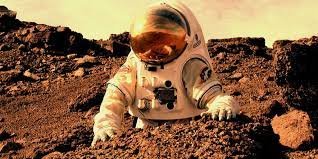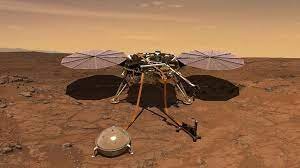The primary concern for human colonization of Mars lies in the potential danger posed by Earthly pathogens, which have a greater capacity to adapt to unfamiliar surroundings than we do.
Mars presents a challenging environment for human life due to its oxygen-free atmosphere, high radiation levels, and limited availability of nutrients. Nevertheless, it is possible that the same conditions that make it inhospitable for us could be more tolerable for certain microorganisms that we inadvertently carry along, although we would prefer to avoid their excessive proliferation.

Astrobiologists observed the existence of sugar in meteorites three years ago and discovered that certain bacteria could thrive on a diet of space candy. Fortunately, the likelihood of microorganisms colonising future asteroid bases is low due to various environmental factors. However, the situation may differ on Mars. To investigate this, a team led by Tommaso Zaccaria, a PhD student at the German Aerospace Center, conducted an experiment to assess the adaptability of local microbes in a simulated Martian environment. Surprisingly, the microbes exhibited remarkable growth, potentially raising concerns.
The inclusion of hitchhikers is an inevitable aspect of missions to other celestial bodies. Despite our best endeavours to sterilise spacecraft, the mere existence of bacteria beyond the confines of the International Space Station serves as a reminder of our limitations. When humans are part of the equation, the task of ensuring cleanliness becomes exponentially more difficult.

Beneficial bacteria, particularly in our gut, play a crucial role in our well-being.
Therefore, some of these cosmic travellers will be embraced. The others should remain relatively neutral, unless Mars happens to harbour its own life forms that are incompatible with our presence. However, future astronauts would rather avoid cases of sepsis or dysentery caused by unwelcome companions from Earth.
The authors subjected four types of bacteria (Burkholderia cepacia, Klebsiella pneumoniae, Pseudomonas aeruginosa, and Serratia marcescens) to conditions resembling the air, soil chemistry, and UV radiation encountered by our rovers.
The responses of the bacterial species differed. For instance, B. cepacian seems to be unable to thrive in the presence of sodium perchlorate, which is commonly found in Martian brines, unless it is provided with glucose. Conversely, K. pneumoniae does not appear to be affected by sodium perchlorate. The repeated drying out to mimic the usual scarcity of water on Mars significantly reduced the number of species.
However, all four species managed to survive, to some degree, for days or weeks. They fared better when supplied with imitation Martian regolith (soil) in addition to sugar, as opposed to sugar alone. marcescens has proven its resilience by successfully adapting to the diverse set of conditions on Mars, including light, soil, air, and water. This remarkable ability to thrive without the aid of evolution is truly impressive. While it is commonly found in hospital-acquired infections, S. marcescens is notorious for causing urinary tract infections and turning wounds septic.
Zaccaria, in an interview with Science News, initially held the belief that the regolith would exert a toxic influence on the cells, thereby constraining their growth. However, contrary to their initial assumptions, the opposite was observed.
The authors speculate that this unexpected outcome may be attributed to the soil particles providing a refuge from UV light and other threats to bacterial survival. In the context of human presence on Mars, it is inevitable that pathogens will accompany us in our gastrointestinal tract or on our skin.
Consequently, it can be anticipated that some of these pathogens will find their way into the soil surrounding the base. This study suggests that these pathogens may proliferate whenever they have access to water, irrespective of its salinity. In the absence of a well-functioning ecosystem to regulate their growth, the risk of these pathogens infecting other astronauts becomes significantly elevated. This poses a major concern, particularly considering the unprecedented distance from the nearest hospital that astronauts would be situated.
The discovery came as no great shock. In a study conducted in 2022, it was revealed that a particular strain of yeast has the ability to endure in the briny water of Mars during infrequent thawing episodes. Additionally, numerous extremophiles have been identified as probable candidates for thriving on the red planet. Nevertheless, the gravity of the situation intensifies significantly when considering that not only are these four species likely to coexist with humans, but they could also pose a substantial threat to us once we arrive there.
The findings have been documented in the Astrobiology journal.
